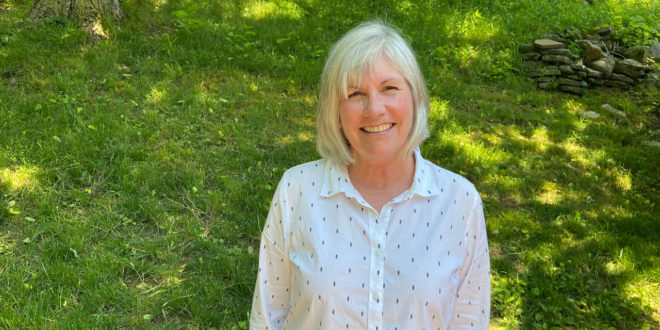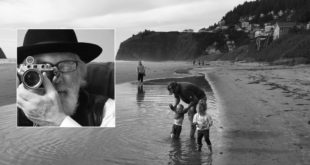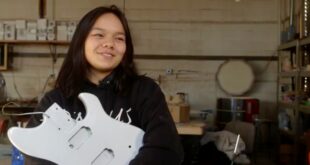We interviewed Shona Macomber, an art teacher and professional artist from Ohio, about her lifelong desire to create beautiful images.
Editor – Shona, I have known you for several years and have always admired your art and the enthusiasm you have for creating it. Please tell us about your journey into art. When did it begin, and when did you realize this was something you wanted to pursue seriously?
Macomber —My interest in art began with parents who believed in the gift of art. My parents recognized the artistic potential in their firstborn child because someone told them I had talent based on small circles I had drawn with chalk on the sidewalk. Hmmm… not very convincing evidence if you ask me, but they believed that the genetics were there. I come from a line of very artistically talented people, and my parents felt that I had the gift. I was provided the usual humble supplies of chalk and crayons, tools that fascinated me with their mesmerizing colors. Still, my parents’ positive attitude toward my “work” encouraged me to keep at it.
I was 10 years old when my mom introduced me to Mrs. Steck, an artist who taught private lessons to children. She impacted my art and my future with her gentle instruction and freedom to create. I would spend the rest of my life practicing and teaching art. I have always wanted to give to others what I was honored to receive from her.
It has always been easy to teach art; becoming a professional artist has been a more difficult path. Many artists go through an identity crisis because we are taught that “being an artist” is not a real-life goal. It is acceptable to do art as a hobby but not as a career; the “starving artist” specter always looms in the background. I knew that I wanted to be an artist by profession, but I was discouraged from going to art school. It was years later that I discovered my paintings were a sellable product. In hindsight, I see that what I really needed to pursue in college was a degree in business.
I began focusing on painting while raising my children. I’m afraid that I have taught them by example that every well-furnished home should have an art table at the center. I produced hundreds of art pieces—probably thousands—in this setup. I have not waited for life to be ideal before doing what I love.
Editor – Thank you for mentioning the challenge that artists often encounter people thinking their pursuits are not life-sustaining. Sometimes people get to the end of their lives and say, “I wish I had taken more risks and spent more time following my heart instead of a paycheck.” But I get it. We do have to make enough to be able to pay the bills. You’ve been able to make your situation work, which is great!
I love how you realized there was no perfect time to create art. That inspires me. I took an art minor in college and liked to paint with acrylics. The biggest challenge to creativity is waiting for the perfect moment to get started on a new painting. It never comes.
What is your favorite subject to paint? And, do you paint what you want, or what you think will sell?
Macomber —I have to smile at the idea that I have made my situation work. The truth is that I have an incredibly supportive husband who has encouraged me to follow the path of an artist. The majority of working women artists that I have met over the years have a husband or partner who is actively involved in their work, often as a business manager. An art career is more dependent on business and consistent hard work than on talent and skill as an artist. I have yet to reach the level of sustainable income in my work, but I’m now in a stage of life that can be focused more on the business end of things if that’s what I choose to do.
This brings me to the question of painting for passion or income.
Years ago, I met an artist who said, “Paint what you want; your audience will find you.” I have tried to stick to that wisdom. Finding an audience is different than painting subjects that will sell. An artist needs an audience to feel complete; art is an interactive process. Not everyone will relate to my work, but those who do are very important to me. They feed my creativity.
This philosophy actually goes pretty deep, back to the beginning of time for a Creationist. Years of contemplation on Genesis 1 have given me a small understanding of God as an artist. In the beginning, He has something to say; at the end, He gathers an audience to interact and respond to His completed work. I have practiced my own art with this understanding and based my teaching curriculum on the Creation days. I paint for an audience that is personal to me. Sometimes that audience responds by purchasing paintings.
The subjects I choose to paint are whimsical and imaginative usually—creatures and characters based on childhood. I like to tell stories with my paintings. I’ve been through many subject stages over the years and experimented with my style. I have been influenced at times by the reaction most people give to “realism.” We often think good art needs to look realistic. But art is so much more than producing a subject (I could write a book on this!). I can paint realistically, but those pieces often don’t speak to the heart; they stay in the cognitive realm, admired but not impacting. Other artists do realism with more feeling. I have finally accepted that I am a kid at heart, and I allow that part of me to be the source of my style.
Editor – You have shared so many thoughtful insights here. When you are creating a work of art, you have a lot of time to think about what you’re doing and why. Being able to articulate this in a meaningful way reveals the teacher’s side of you. You are gifted with both art and teaching and you have inspired many to continue their creative journeys. Thank you for sharing with us.
View Shona’s art online | Shona Facebook Wall
This interview was conducted by Rich DuBose, director of Adventist Society for the Arts.
© 2017 - 2024 ASA. All rights reserved. Click here for content usage information.



